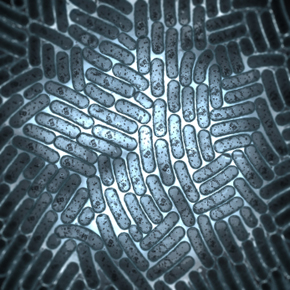We're Very Grateful for our Funding
Current GrantsOur lab is highly inter- and multi-disciplinary. Our undergraduates, graduate students, and post doctoral researchers have come from many fields including ecology, animal behavior, evolutionary biology, epidemiology, public health, computer science, applied mathematics, engineering, and physics. One of the primary goals of our lab is to function as a single research group, despite the diversity of our backgrounds, perspectives, and driving questions of interest. We actively strive to break down barriers in communication among fields at every level not only within our lab (e.g. weekly lab meetings where the perspectives of these fields to each problem under study in the lab is discussed), and in outreach efforts to the broader scientific community (e.g. by offering new courses - see EEB 475 Conversational Bio-mathematical Modeling).
Epidemiology and Biosecurity
Our lab is interested in the mathematical modeling of infectious disease dynamics, especially how individual behaviors and contact patterns cause different outcomes at the level of the population. Our work is both theoretical, developing new mathematical methods, and applied, employing a diversity of modeling techniques to explore best practical methods for public health interventions. We focus not only on health outcomes, but also issues of economic impacts and/or societal stability. Lastly, we are interested in novel methods for biosurveillance and outbreak detection and how best to employ surveillance systems with epidemiological modeling to achieve the most efficient preparedness and intervention strategies.
Evolutionary Sociobiology
Our lab is interested in self-organizing systems and the complexity of emergent social systems governed by individual behavior. We use mathematical modeling to investigate possible mechanisms for the evolution of sociality. Additionally, we work to characterize traits which increase both the success and stability of organizational structures and strategies, especially those that make populations best able to survive group-level threats, such as those posed by epidemics.
Conservation Biology
Our lab is interested in developing new mathematical tools to help estimate extinction risks for at-risk populations and understanding what factors may have played the most critical roles in putting those populations at risk. We are also involved in academic outreach, working to involve managers and hands-on practitioners of conservation for declining populations and control efforts for invasive threats. Our goal is to produce practical tools for wildlife managers and conservationists.
BioInspired Algorithms
Our lab is interested in developing engineered algorithms based on tools and solutions observed in nature. So far, we have focused specifically on nonparametric distributed anomaly detection, but we are also working on expanding the foundations of nature-inspired design.
